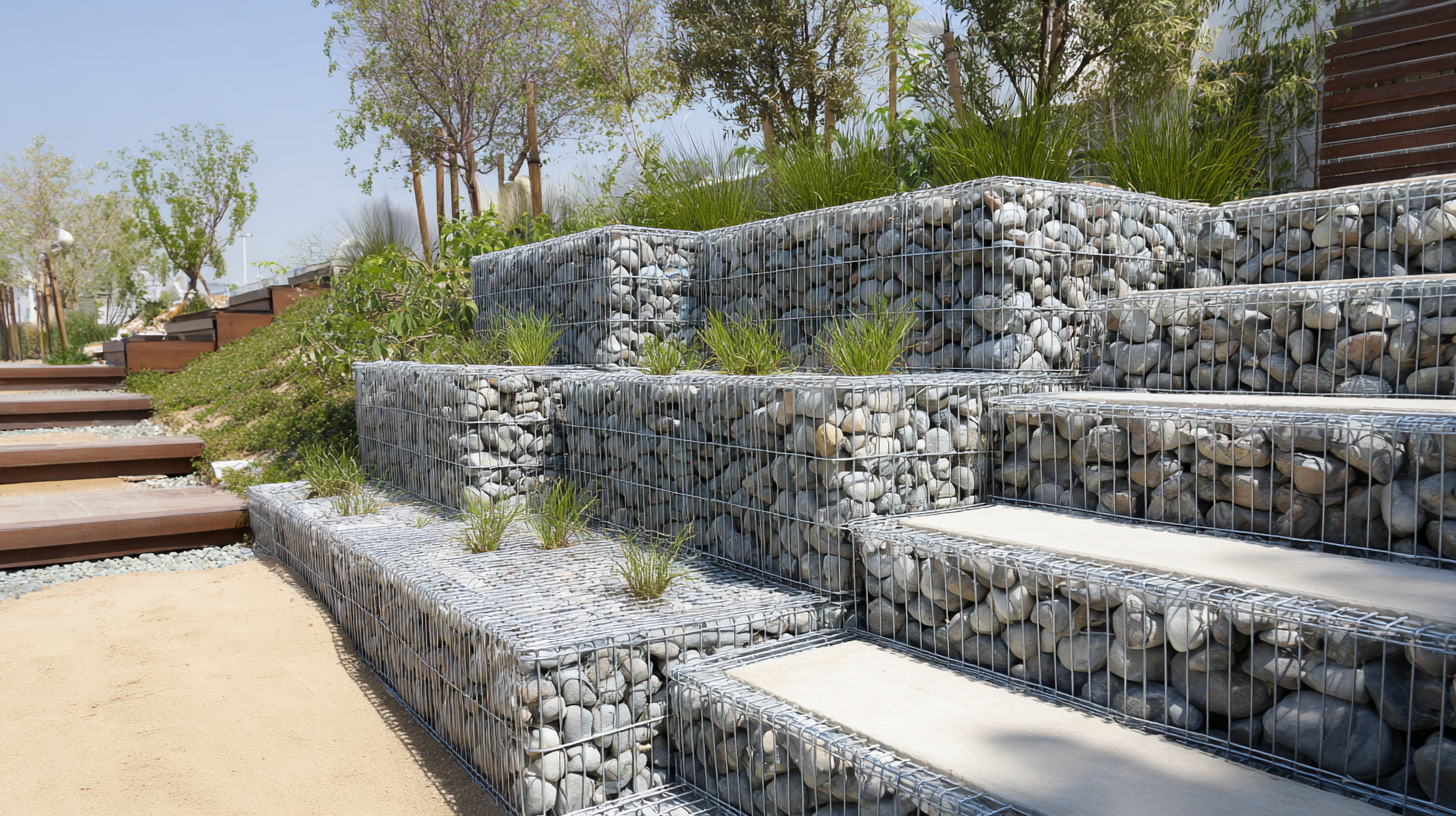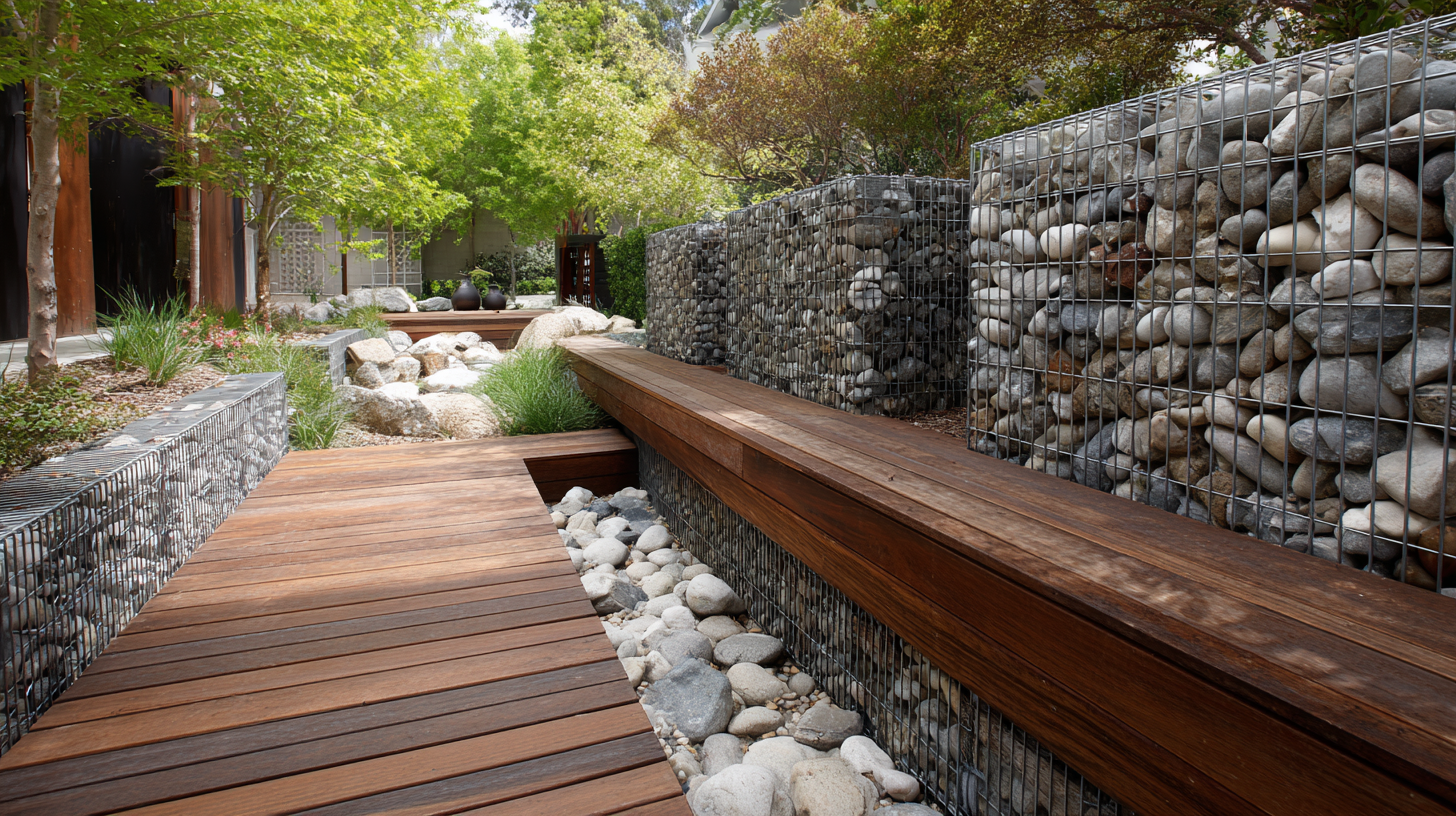Innovative Ways to Use Gabion Cages for Sustainable Landscape Design
In the realm of sustainable landscape design, gabion cages have emerged as a versatile and innovative solution, transforming both urban and rural environments. Renowned expert in landscape architecture, Dr. Emily Carter, emphasizes the potential of gabion cages, stating, "Gabion cages not only provide structural integrity but also allow for ecological integration, fostering biodiversity in landscape projects." This statement underscores the dual function of gabion cages as functional elements that can enhance the aesthetic appeal and ecological value of a landscape.
Using gabion cages creatively can revolutionize traditional landscaping concepts. From earth retention and erosion control to forming unique artistic installations, these wire mesh containers filled with stones or other natural materials can be tailored to meet specific environmental needs. As sustainability becomes increasingly critical in design practices, the incorporation of gabion cages offers a compelling approach that aligns with eco-friendly principles. By exploring various applications and imaginative implementations of gabion cages, landscape designers can create spaces that not only meet human needs but also respect and enhance the natural environment.
In this article, we will delve into innovative ways to incorporate gabion cages into sustainable landscape design, highlighting their practicality and aesthetic potential while providing insights and inspiration for both professionals and enthusiasts alike.

Creative Water Features: Enhancing Gardens with Gabion Cages
Gabion cages, traditionally used for erosion control and structural support, have emerged as a dynamic element in sustainable landscape design, especially when it comes to creative water features. By integrating these versatile stone-filled wire baskets into gardens, designers can craft stunning and functional water elements that enhance both aesthetics and ecological balance. Gabions can serve as beautiful retaining walls, creating tiers in garden spaces that hold water features like ponds or waterfalls, allowing the gentle flow of water to mingle with natural stones.
In addition to retaining walls, gabion cages can be utilized to create visually striking fountains or aquascapes. The natural textures and colors of the stones within the cages provide a rustic charm, while the sound of flowing water encourages a serene atmosphere. Incorporating plants around these structures not only softens their appearance but also promotes biodiversity, attracting various wildlife. Overall, gabion cages present a unique opportunity to integrate artful water elements into sustainable landscapes, underscoring the harmony between nature and human innovation.
Erosion Control Solutions: Using Gabion Cages in Slopes and Riverbanks
 Gabion cages, often used in modern landscape design, provide an effective solution for erosion control,
particularly on slopes and riverbanks. According to a report by the Environmental Protection Agency,
nearly 75% of riverbanks experience erosion, leading
to significant habitat loss and water quality issues. The utilization of gabion cages—a structure filled
with rocks, concrete, or other materials—helps to stabilize these vulnerable areas. Their ability to absorb
and dissipate energy from flowing water makes them a fantastic choice for maintaining soil integrity and
promoting ecological balance.
Gabion cages, often used in modern landscape design, provide an effective solution for erosion control,
particularly on slopes and riverbanks. According to a report by the Environmental Protection Agency,
nearly 75% of riverbanks experience erosion, leading
to significant habitat loss and water quality issues. The utilization of gabion cages—a structure filled
with rocks, concrete, or other materials—helps to stabilize these vulnerable areas. Their ability to absorb
and dissipate energy from flowing water makes them a fantastic choice for maintaining soil integrity and
promoting ecological balance.
When considering gabion cages for erosion control, it’s essential to implement them properly to maximize
their effectiveness. Tip 1: Ensure that the cages are filled with
locally sourced stone to integrate seamlessly with the surrounding environment and promote biodiversity.
Tip 2: Use vegetation alongside gabion installation; plants can further
anchor the soil and enhance aesthetic appeal. Research from the American Society of Civil Engineers indicates
that combining gabions with plant life can reduce erosion rates by up to 30%.
For those interested in sustainable landscape design, integrating gabion cages into your project not
only contributes to preventing erosion but can also improve the overall ecosystem. Tip 3:
Regular maintenance of the cages is crucial; inspect them biannually to ensure they remain structurally sound
and functional. With these approaches, gabion cages could play a pivotal role in creating resilient landscapes
that thrive in harmony with nature.
Raised Garden Beds: Sustainable Growing Solutions with Gabion Structures
Raised garden beds have gained popularity as a sustainable solution for urban gardening, and integrating gabion cages into their design is a groundbreaking approach. Gabion cages, traditionally used for erosion control, can be repurposed to create attractive and functional raised beds. When filled with local stones or recycled materials, these structures not only provide excellent drainage but also promote biodiversity by supporting soil health and preventing compaction. According to a report by the American Society of Landscape Architects, using materials like gabions can reduce the environmental impact of landscaping projects by up to 30% compared to conventional methods.
Furthermore, raised garden beds constructed with gabion cages offer flexibility in design and accessibility. They can be adapted to various heights to accommodate different gardening needs, making it easier for those with mobility issues to participate. Research indicates that raised beds can increase vegetable yields by 20-50%, as they enable better soil management and extend the growing season. By embracing gabion cages in landscape design, gardeners can create sustainable growing solutions that enhance both functionality and aesthetics, demonstrating that innovation in gardening practices is key to promoting eco-friendly urban environments.
Artistic Installations: Transforming Spaces with Gabion Cage Sculptures
Gabion cages, often associated with functional landscape design, have evolved into a canvas for artistic expression. By utilizing these robust structures, artists and designers can create stunning sculptures that not only enhance the aesthetic appeal of public spaces but also promote sustainability. Filling gabion cages with natural materials such as stones, plants, or recycled content allows for unique creations that harmonize with the environment, encouraging a dialogue between nature and art.
Transforming ordinary landscapes into extraordinary art installations, gabion cage sculptures can take many forms, from abstract shapes to intricate designs. These installations not only serve as visual focal points but also contribute to the ecological health of an area. For instance, incorporating native plants within the cages can provide habitats for local wildlife while improving biodiversity. As communities increasingly prioritize sustainability, gabion cage art offers a compelling way to blend functionality with creativity, breathing life into urban settings and natural landscapes alike.
Wildlife Habitats: Creating Eco-Friendly Spaces with Gabion Designs
Gabion cages, traditionally used for erosion control and structural support, present innovative opportunities for creating wildlife habitats in sustainable landscape design. By filling these wire mesh containers with natural materials such as stones, logs, and recycled debris, designers can craft unique spaces that encourage biodiversity. The irregular surfaces of gabions provide excellent hiding spots for various species, including insects, small mammals, and birds, fostering ecological balance and promoting a thriving ecosystem.

Incorporating plants into gabion structures further enhances their effectiveness as wildlife habitats. Climbing plants and grasses can be grown over the cages, creating a rich environment that attracts pollinators while ensuring soil stability. Additionally, strategic placement of gabion cages near water sources or within native gardens supports local wildlife by offering food and shelter. This integrated approach not only maximizes the ecological benefits of gabion designs but also promotes a visually appealing landscape that aligns with sustainable practices.
